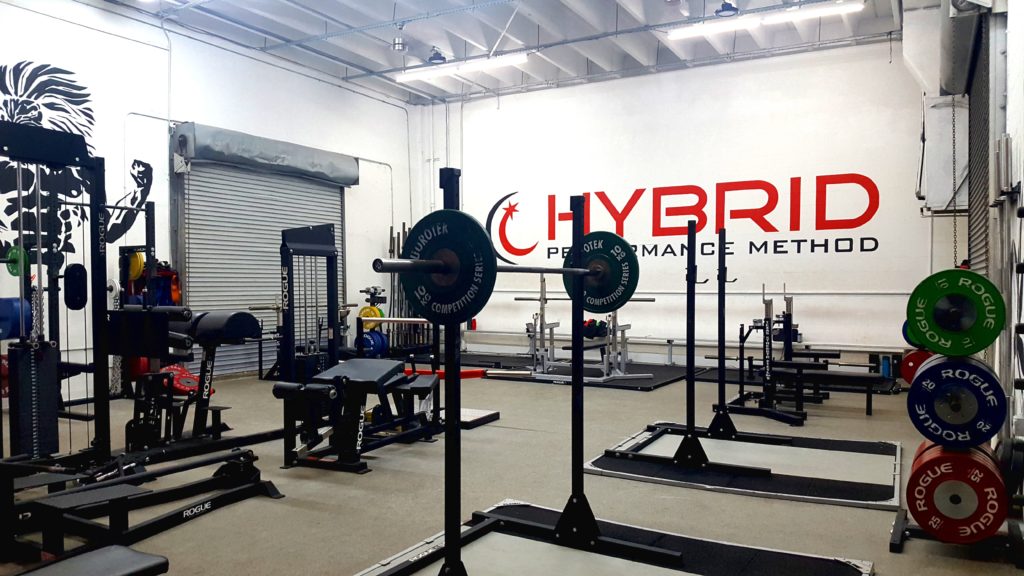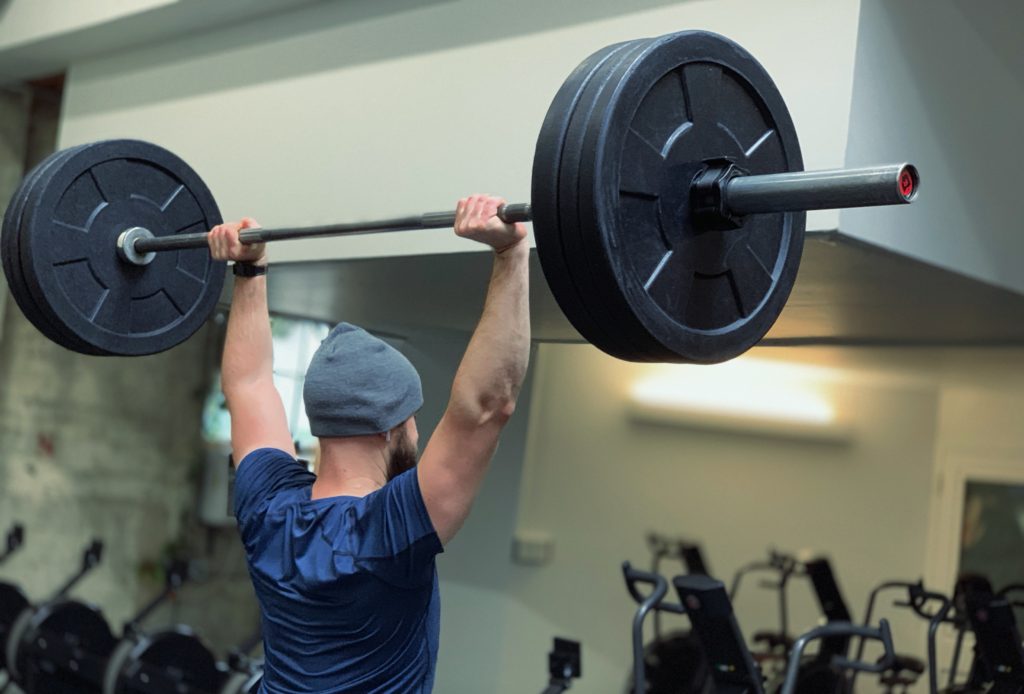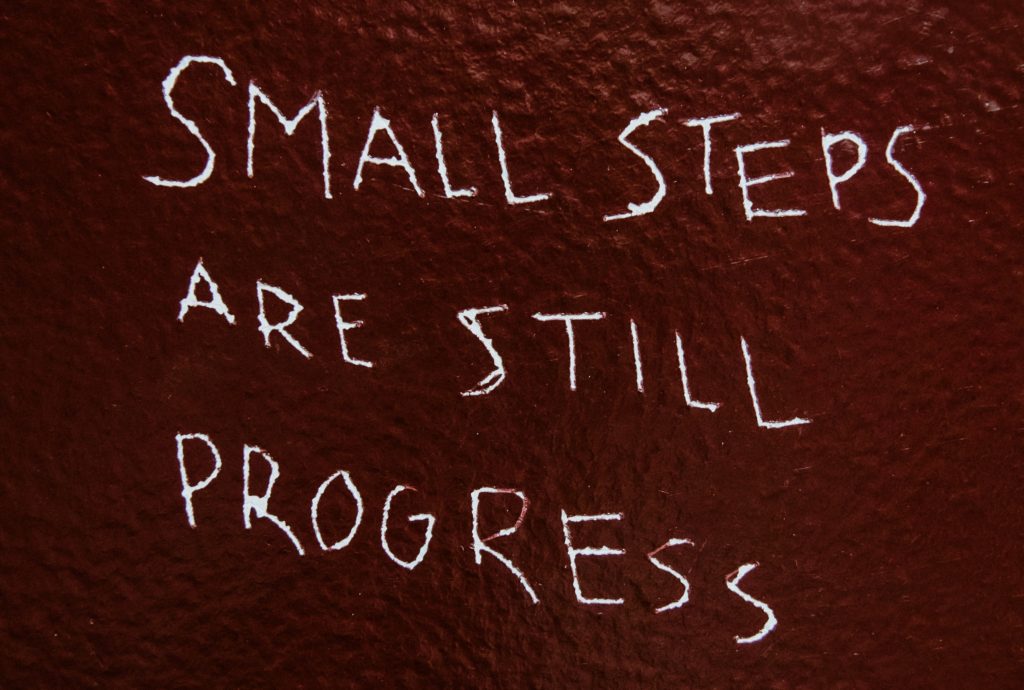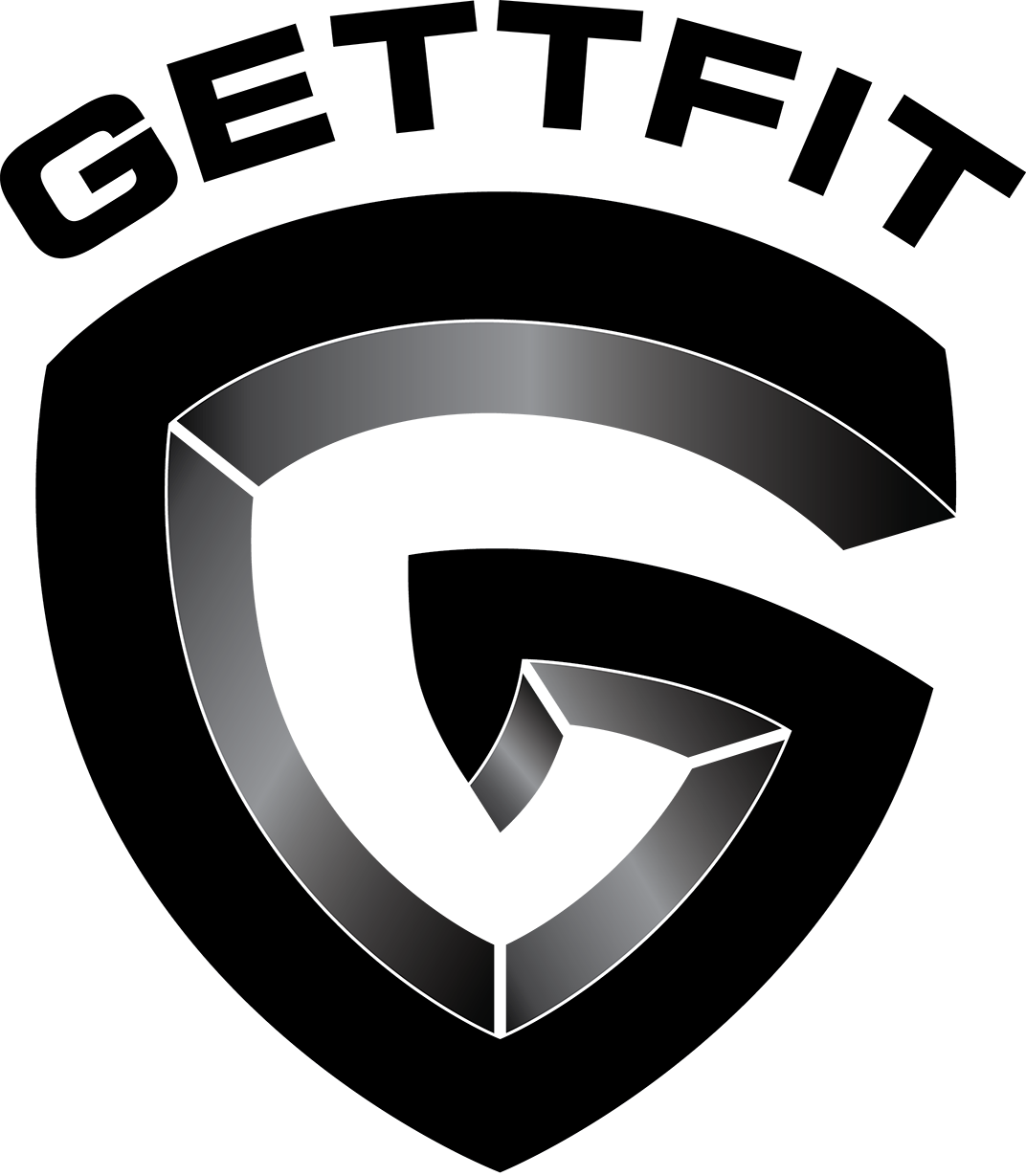5 Reasons You’re Struggling To Build Muscle

Are you struggling to build muscle?
If so, I don’t blame you. Building a significant amount of muscle isn’t easy.
There’s plenty of room for mistakes to be made while attempting to build your physique.
It takes patience, consistency, and a whole lot of hard work. There are many factors inside and outside the gym that can impact your progress as well.
If you’re having a hard time putting on muscle, take a look at the list below.
You might find you’re missing one or more of these key components.
1. You’re Not Eating Enough Quality Food
Lifting weights, getting enough sleep, eating well, doing nearly everything right, but still can’t seem to gain any muscle? Then you might not be eating enough calories—calories coming from quality, nutrient-rich foods that provide your body with the building blocks it needs to build muscle.
You can lift heavy weights all you want, but if you are not eating enough, you won’t build much muscle.
The only people that will be able to build a significant amount of muscle in a calorie deficit or at maintenance, are those using performance enhancing drugs (even these guys should still be in a surplus in order to gain muscle), those who are very new to lifting weights, very overweight lifters, and people who’ve built a good amount of muscle in the past, then took months or years away from the gym, and have now returned to lifting.
Beyond the early beginners stage, gaining muscle gets more and more challenging. There needs to be enough calories and nutrients for muscle repair and growth to occur.
You can’t build a house without the proper amounts of raw materials. If there’s nothing there to build with, then it can’t be built. Protein, carbohydrates, fats, vitamins and minerals are your raw materials to build with.
This does not mean make each day an all out eating contest, but provide just enough extra calories that will result in a steady rate of weight gain of about 1 pound every week or two. This comes out to about an extra 250-500 calories per day.
Gaining weight at this rate is ideal because it ensures you’re eating enough calories to build muscle, but keeps body fat gain to a minimum so you can still maintain a fairly lean physique while improving.
Not only is staying relatively lean while gaining weight healthier and you look better, but when it comes time to strip away that extra body fat that was added on during the caloric surplus phase, you won’t have as much body fat to lose in order to reveal the hard-earned muscle you’ve gained.
Keep track of your weight, pay close attention to how your clothes fit, take body part measurements, and take a look in the mirror or take progress pictures to get an idea if you’re gaining weight a bit too fast, too slow, or just at the right pace.
Not sure how much food you’re eating?
Then I’d highly suggest getting a food scale and start paying close attention to nutrition labels. With a food scale and nutrition label you can accurately measure out all of your meals, knowing exactly how many calories you’re eating.
When you know exactly how much you’re eating, it’s much easier to be consistent, keep yourself accountable, and make the proper adjustments when needed based off your current goals. You might find your weren’t eating as much as you thought.
Many people are very unfamiliar with portion sizes and can under or overestimate their caloric intake by a considerable amount. Take the time to track your calories if you’re not sure if you’re eating enough. It takes a bit of extra time, but it could be difference maker.
People often forget that quality, nutrient-dense foods with minimal ingredients are typically lower in calories.
For example, half a pound of chicken breast is only 240 calories. There are only about 155 calories in an entire pound of broccoli. You could eat half a pound of chicken and one pound of broccoli for only 395 calories total.
My point is, because higher quality foods are typically lower in calories, you need to eat more food in volume.
Getting 3,500 calories from lean meats, complex carbs, and vegetables is much more challenging than getting in 3,500 calories from pizza, cookies, and ice cream. Those are calorie-dense foods that make eating so many calories much easier
Even though you might feel like you’re eating a lot in terms of volume, when it comes to calories, you still might not be eating enough.

2. You’re Not Getting Enough Quality Sleep
Getting enough quality sleep—about 7 to 9 hours—is crucial for gaining muscle and increasing strength.
What counts as quality sleep? The National Sleep Foundation defines quality sleep as falling asleep in 30 minutes or less, sleeping through the night with no more than one awakening, and drifting back to sleep within 20 minutes if you do wake up.
Poor sleep is the kind that leaves you staring at the ceiling, toss and turning. When you eventually do fall asleep, you find your sleep getting interrupted throughout the night.
Your body is repairing and restoring itself while you sleep. Without enough sleep, your recovery from your weight training sessions won’t be very good.
During sleep there is an increase in nutrient-rich blood going to muscles which assists with recovery. The very large majority of growth hormone release occurs during this time. Growth hormone assists with muscle growth, aids in fat loss, manages metabolism, increases protein synthesis and amino acid absorption, and stimulates the liver to produce another very important muscle-building hormone called IGF-1 (Insulin-like Growth Factor 1).
These two hormones along with testosterone are all elevated, reaching peak levels to create an anabolic environment in the body which is advantageous for muscle growth, recovering from injuries, and revitalizing the body.
Cut your sleep short and these hormones aren’t optimized. If these hormones aren’t optimized, they can’t effectively perform all the functions they’re meant to, and your ability to build muscle suffers.
Sleep deprivation also causes cortisol levels to rise. Cortisol is a catabolic stress hormone. Simply put, catabolic (breaking down) is the opposite of anabolic (building up). If cortisol levels are chronically elevated due to consistently poor sleep, it could cause your body to start breaking down muscle protein to use as fuel.
Another result of a lack of sleep is inefficient muscle glycogen replenishment. Glycogen, the stored form of glucose (carbohydrates) in skeletal muscle and the liver, is the main energy source for your muscles during exercise. So if glycogen stores are not being replenished, then you can expect a decrease in performance in the gym.
Lastly, sleep affects your mood and overall well-being. Sleep deprivation leaves you tired, irritable, mentally and physically fatigued, lacking motivation, and stressed out.
Chances are if you’re lacking motivation and aren’t feeling your best, you’re not going to feel like getting to the gym. If you do still get to the gym, it’s highly unlikely that’ll you be performing your best.
If you can’t perform at your best in the gym, you can be sure it’ll slow down your progress towards reaching your muscle-building goals.
Want better results in the gym?
Get on a regular sleep schedule, ditch the screen time before bed, limit your caffeine intake to earlier hours in the day, and develop a consistent bedtime routine that helps you decompress after a long day and get comfortable.

3. You’re Not Doing Enough Compound Movements
Compound movements are multi-joint exercises using multiple muscle groups at the same time. Since multiple muscle groups and joints are working together to move the weight, higher loads can be used. This is great for building muscle and increasing strength.
Some examples of compound lifts include:
✓ Bench Press
✓ Overhead Press
✓ Squat
✓ Lunge
✓ Deadlift
✓ Row
✓ Pull-Ups/Chin-Ups
✓ Lat Pulldowns
✓ Leg Press
These are the main compounds, but there are more. Variations of these exercises are also considered compound lifts. Conventional, Romanian, stiff-leg, and sumo deadlifts are all compound lifts. Flat, decline, and incline barbell and dumbbell bench press are all compound lifts as well.
If you’re struggling to build muscle, make sure the bulk of your training consists of variations of compound lifts. Isolation exercises have their place in a training program and should be included to compliment the compound lifts.

4. You’re Not Keeping Track of Your Workouts
Going to the gym and going through your workouts without keeping track of anything you’re doing could be one of the reasons you’re struggling to build muscle.
Keeping a workout journal has many benefits.
When you know exactly what you’re doing from one workout to the next, week after week, it makes it much easier to know what adjustments need to be made to your routine to ensure you’re still challenging yourself and progressing.
If you notice in your workout journal you can now consistently do 100-pounds on squats for 10 reps, it’s time to increase the weight to 105-pounds and attempt 10 reps, or keep the weight at 100-pounds and increase the reps to 12. Those are just two simple examples of how to apply the principle of progressive overload.
That’s the major benefit to recording workouts—it allows you to accurately, consistently, and incrementally make adjustments to you workouts to make certain that you’re progressing in some form.
Without progress in the gym, your body will remain the same. You have to give your body a reason to change. It’s not going to change if you keep repeating the same workouts, with the same weight, same reps, same everything, every time you go to the gym. Your body can already do that.
Keeping a workout journal is also a great way to keep yourself accountable and honest with what you’re actually accomplishing in the gym. It can also serve as a great source of motivation.
It can be fun and motivating to look back at workouts from several months ago and see the amount of progress you’ve made and how much you’ve improved. Sometimes we don’t realize how far we’ve come until we look back at where we started.
You can also keep track of much more than just exercises, reps, and weight. Try tracking how much rest you’re taking between sets. You might find you’re taking way too long between sets, or maybe not enough rest. You can also record how long your workout took to complete. If you’re at the gym for three hours, you should probably take a look at how you’re spending your time while you’re there.
Lastly, you can even record how you felt going into the workout. If you’ve been having a rough day and you’re stressed out, it will most likely impact your workout in a negative way. You’ll probably have other things on your mind, so you won’t be focused, and the quality of your workout will suffer.
Grab a small notebook and a pen or type it into your phone. Choose what works best for you. I can guarantee that once you begin logging all of your workouts, including all the details and variables, the quality of your workouts and your results will improve. It takes a bit of extra time, but is well worth it.

5. You’re Not Working the Muscle Effectively
Improper form, lack of intensity, and going through the motions without a purpose are common mistakes that can be found in nearly any gym you walk into.
If you’re struggling to build muscle, you may want to double-check your training. You form should be spot on and your training intensity and effort should be high enough to stimulate muscle growth.
Improper movement patterns, poor form and technique, and using excessive amounts of momentum to lift weights are all ineffective for building muscle and only increase your chance of injury. You won’t be stimulating the targeted muscle very well.
Building muscle requires a stimulus that is strong enough to cause the muscle to grow bigger and stronger.
When your form is off, other muscles get recruited to help move the weight. The muscle you’re trying to target isn’t being worked to it’s full capacity. There isn’t enough stress placed on the muscle. When this happens, you won’t be maximizing your muscle-building potential.
Besides slowing down muscle growth, poor form can also lead to injuries, aches, and pains that can negatively impact your training and physique.
You might not notice the damaging effects of bad form immediately. Repeatedly bad form can take months or even years to expose it’s damaging effects—stubborn and nagging pains, or even a major injury.
Going through the motions, aimlessly moving the weight from point A to point B is a common mistake I see in gyms all the time.
If you’re training to build muscle, one of your primary focuses should be having a purpose with each repetition and being fully focused on making the muscle move the weight through a full range of motion effectively.
Think about a great set of bicep curls. On each rep, your elbows will be still by your sides. You use your biceps to curl the weight up while still keeping you elbows in and by your sides. You really make the biceps work hard and get to that peak contraction at the top of the curl. You’re getting a great pump as your biceps are swelling with blood. You then slowly and in a controlled manner lower the weight back down, still making the muscle work hard to fight gravity and not let the weight drop uncontrollably.
Next time you’re in the gym, be very aware of each and every repetition of every set. Are you just casually going through the motions, or are you making each targeted muscle work very hard through a full range of motion?
If you’re not training at a high enough level of intensity, meaning enough weight on the bar, you won’t build much muscle. If you’re struggling to build muscle, take a second look at your training intensity.
If you’re not sure how to measure training intensity, you can take a look at what training percentages you’re using for your lifts. Find your 1-rep max on your main compound lifts—bench press, squat, deadlift, and overhead press. You can do this by finding a true 1-rep max, or you can get a 3 to 5-rep max and use an online 1-rep max calculator to get a close estimate.
When training to build muscle, use loads that are at least 60% of your 1-rep max.
Research has show you can build muscle with lower percentages of your 1-rep max, but once you start dropping intensity beyond a certain point, you require many more reps to get the same stimulating effect. It’s not quite as efficient as working in a more moderate to high intensity range of 60-85%.
You can subjectively measure your level of effort by using the RPE (Rating of Perceived Exertion) scale. This is a 1-10 scale. One being extremely easy, ten being an all-out max effort.
One of the drawbacks of the RPE scale is that it’s subjective. Beginners might not have the experience yet to accurately assess their levels of exertion.
Research has shown that many people have quite a few more reps in the tank than they believe. In other words, people aren’t training as hard as they think they are, and are capable of. Don’t make this mistake.
Even though the RPE scale is subjective, it’s still a useful tool when measuring training intensity. Not a requirement, but at tool to be used. Be honest with yourself and truly push yourself.
Most of your sets should consist of an RPE of about 7-9 out of 10. This equates to about 1-3 reps left in you (also known as RIR, or Reps In Reserve).
Isolation exercises can be taken closer to failure, and to failure and beyond more frequently since they are far less taxing than multi-joint compound lifts.
Train hard, but train smart.
